Tired of unattractive radiators taking up valuable real estate in your home? Have you had enough pesky chilly patches that emerge no matter how warm it gets? Perhaps you’re thinking about installing electric underfloor heating. This straightforward guide covers all you need to know about electric underfloor heating, including how much it costs and if it is appropriate for your house and requirements. So please grab a cup of coffee and kick back while we assist you in making the best selections for your family and home.
What is the Definition of Electric Underfloor Heating?
Electric underfloor heating (also known as a dry system) is a simple and effective method to heat your house without using a radiator. Electric underfloor heating, suitable for every space and floor finish type, will heat your room from the floor up and eliminate any unpleasant cold patches.
Why should you Think About It?
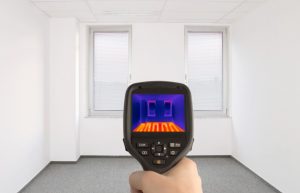
Electric underfloor heating is regarded as a cost-effective method of heating kitchens, baths, and other areas in a home where maintaining an ideal temperature may be challenging. Electric underfloor heating is a popular alternative to radiators since it is completely invisible and requires no care and maintenance.
Here are some of the top electric underfloor heating advantages to consider when deciding if it is the perfect solution for you:
- Electric underfloor heating distributes heat uniformly across space by radiating heat from the floor above.
- Electric underfloor heating is less expensive than conventional heating techniques like radiators. Electric systems are also 25% more energy efficient.
- Unlike conventional heating, electric underfloor heating does not need extended periods of operation to provide the desired level of warmth. This sensitive style of heating rapidly warms up as needed.
- Electric underfloor heating needs minimal to no maintenance when implemented properly.
- Electric underfloor heating eliminates the need for space-consuming radiators since the heat source is located under the floor.
Costs of Electric Underfloor Heating

Installation prices: Depending on your project’s specifications, electric underfloor heating installation expenses might start at £200. On average, labourers will charge £480-720 to install it as part of a renovation, or £240-480 for new construction.
Material prices: When installing electric underfloor heating, materials are where you’ll spend the most money. Materials may cost anywhere from £2,100 to £3,600 on average, depending on the size of your project and the intricacy of the region.
Operating expenses: Exact operating expenses are determined by the system installed, the kind of insulation utilised, and the type of floor covering used.
To get a basic notion of how much electric underfloor heating costs to operate, compare it to central gas heating.
Gas central heating is the most popular household heating method in the United Kingdom. Many people believe that because of its low operating costs during the previous two decades, this heating is the only viable alternative for household heating. On the other hand, electric underfloor heating is the most popular alternative to central gas heating and is gradually becoming the principal heating technique for many household houses throughout the nation. An operating cost calculator will help you determine if the running expenses are reasonable.
How Cost-Effective is Underfloor Electric Heating?
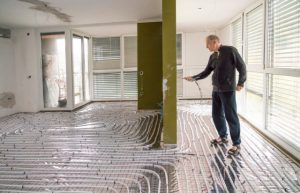
Underfloor electric heating may be a cost-effective solution for people who want to reduce their heating expenditure. Warmup estimates that an average-sized 4m2 bathroom heated for 3 hours per day would cost roughly £22 per month in the winter, whilst a 15m2 lounge heated for the same length of time will cost around £70.
The Installation Procedure
Do you want to know how to install electric underfloor heating? We have everything you need to know for a stress-free work experience.
1. Preparation
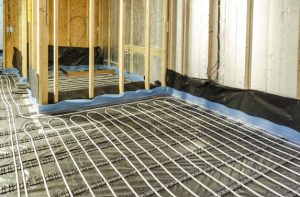
Before you start, ensure the rooms you’re heating are insulated appropriately. Before you begin, make sure the subfloor is clean of debris. You should also schedule an appointment with a skilled electrician to connect the system to the mains.
2. Bringing the Floor Up
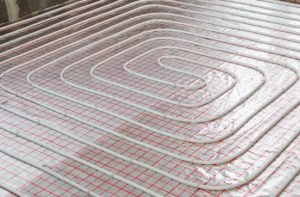
The method you use to pull up your floor will determine the kind of floor you have installed.
Flooring with tongue and groove: The nails in this sort of flooring must be wrenched using a crowbar or similar instrument. After removing the outer trim, start with the row of boards closest to the wall, with the top nails exposed. This will assist in preventing damage if the flooring is to be reused.
Click flooring: This kind of flooring is often simple to remove. Begin by prying up the area where the installation terminated (usually a corner board). You may then remove the whole row next to the wall by flipping each board over and unclicking it from the bottom.
3. Putting the Mat Down
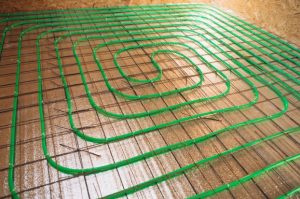
Rolling out the mats is a simple procedure. Follow the manufacturer’s instructions and consult a competent builder to determine if the creed is required throughout the installation. You will also need to install a floor sensor linked to the thermostat. This should be placed on the floor near the wall below the thermostat and tightly fixed.
4. The Last Connection

A trained and experienced electrician should always connect the system to the main electrical supply.
After the Installation
Is electric underfloor heating dependable? After installing an electric underfloor heating system, minimal aftercare is typically required, and the most frequent issue is bad wiring (which is why you should always use a qualified electrician). Contact the manufacturer if your system suddenly stops operating. If the problem is not related to the device, the manufacturer would most likely suggest that you contact an electrician to resolve the issue.
Conclusion
Underfloor heating prices may range from £30 for minor projects to £10,000 for larger installations.
Several variables:
- will determine the cost.
- You choose an underfloor heating system.
- The dimensions of your room.
- The age of your structure.
Underfloor heating systems are a terrific solution for homeowners with careful thought and decision-making since they provide uniformly distributed warmth and comfort. A network of wires is placed under or inside the flooring in an electric underfloor heating system, also known as a dry system, and a thermostat regulates the heat output.









Leave feedback about this